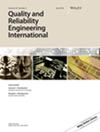基于 FMEA 风险评估的概率不确定语言方法
IF 2.8
3区 工程技术
Q3 ENGINEERING, INDUSTRIAL
引用次数: 0
摘要
故障模式和影响分析(FMEA)被公认为是识别和减少系统故障的有效工具。然而,传统的 FMEA 方法有其局限性。例如,清晰的数字无法充分反映专家的复杂信息和认知上的细微差别。此外,传统方法忽视了分配给 FMEA 专家和风险因素 (RF) 的权重的重要性。此外,传统 FMEA 中对故障模式的简单排序并不能准确反映优先级。鉴于这些缺点,本文利用概率不确定语言术语集(PULTSs)环境和加权汇总产品评估(WASPAS)方法,介绍了一种创新的、完全由数据驱动的 FMEA 方法。在评估过程中,PULTSs 作为表达概率分布的语言工具,可以更合理、更精确地描述信息。为了解决概率分布的权重问题,采用了后悔理论和修正 CRITIC 方法。随后,应用 WASPAS 方法确定故障模式的风险等级。为了说明这种新型 FMEA 模型的可行性和合理性,本文以锂离子电池生产为例进行了说明。为了强调所提出的 FMEA 模型的优越性,还进行了敏感性分析和比较分析。本文章由计算机程序翻译,如有差异,请以英文原文为准。
A probabilistic uncertain linguistic approach for FMEA‐based risk assessment
Failure Mode and Effect Analysis (FMEA) is acknowledged as a beneficial instrument for identifying and mitigating system failures. However, the traditional FMEA method has its limitations. For instance, crisp numbers fail to adequately represent the intricate information and cognitive nuances of experts. Additionally, the conventional approach overlooks the significance of weights assigned to FMEA experts and risk factors (RFs). Furthermore, the simplistic ranking of failure modes in traditional FMEA does not accurately reflect priorities. In light of these drawbacks, this paper introduces an innovative, fully data‐driven FMEA method, leveraging a probabilistic uncertain linguistic term sets (PULTSs) environment and the Weighted Aggregates Sum Product Assessment (WASPAS) method. In the assessment process, PULTSs serve as linguistic tools that express probability distribution, allowing for a more reasonable and precise description of information. To address the issue of weights for RFs, the regret theory and Modified CRITIC method are employed. Subsequently, the WASPAS method is applied to determine the risk rankings of failure modes. To illustrate the feasibility and rationality of this novel FMEA model, the paper includes an example involving the production of Lithium‐ion batteries. To emphasize the excellence of the proposed FMEA model, sensitivity and comparative analyses are carried out.
求助全文
通过发布文献求助,成功后即可免费获取论文全文。
去求助
来源期刊
CiteScore
4.90
自引率
21.70%
发文量
181
审稿时长
6 months
期刊介绍:
Quality and Reliability Engineering International is a journal devoted to practical engineering aspects of quality and reliability. A refereed technical journal published eight times per year, it covers the development and practical application of existing theoretical methods, research and industrial practices. Articles in the journal will be concerned with case studies, tutorial-type reviews and also with applications of new or well-known theory to the solution of actual quality and reliability problems in engineering.
Papers describing the use of mathematical and statistical tools to solve real life industrial problems are encouraged, provided that the emphasis is placed on practical applications and demonstrated case studies.
The scope of the journal is intended to include components, physics of failure, equipment and systems from the fields of electronic, electrical, mechanical and systems engineering. The areas of communications, aerospace, automotive, railways, shipboard equipment, control engineering and consumer products are all covered by the journal.
Quality and reliability of hardware as well as software are covered. Papers on software engineering and its impact on product quality and reliability are encouraged. The journal will also cover the management of quality and reliability in the engineering industry.
Special issues on a variety of key topics are published every year and contribute to the enhancement of Quality and Reliability Engineering International as a major reference in its field.

 求助内容:
求助内容: 应助结果提醒方式:
应助结果提醒方式:


